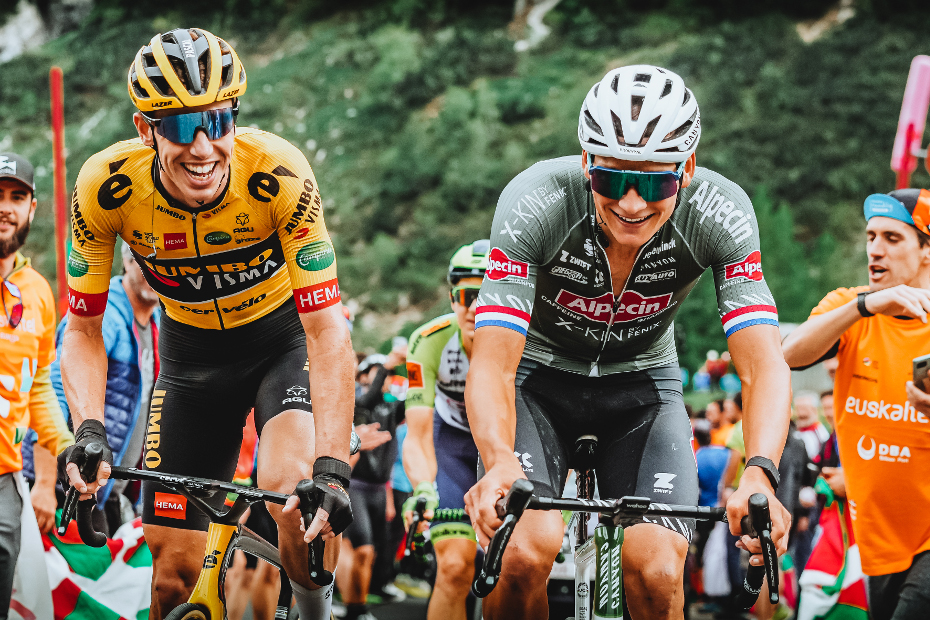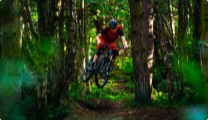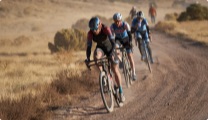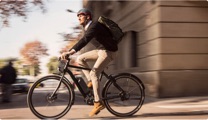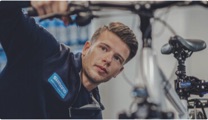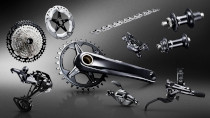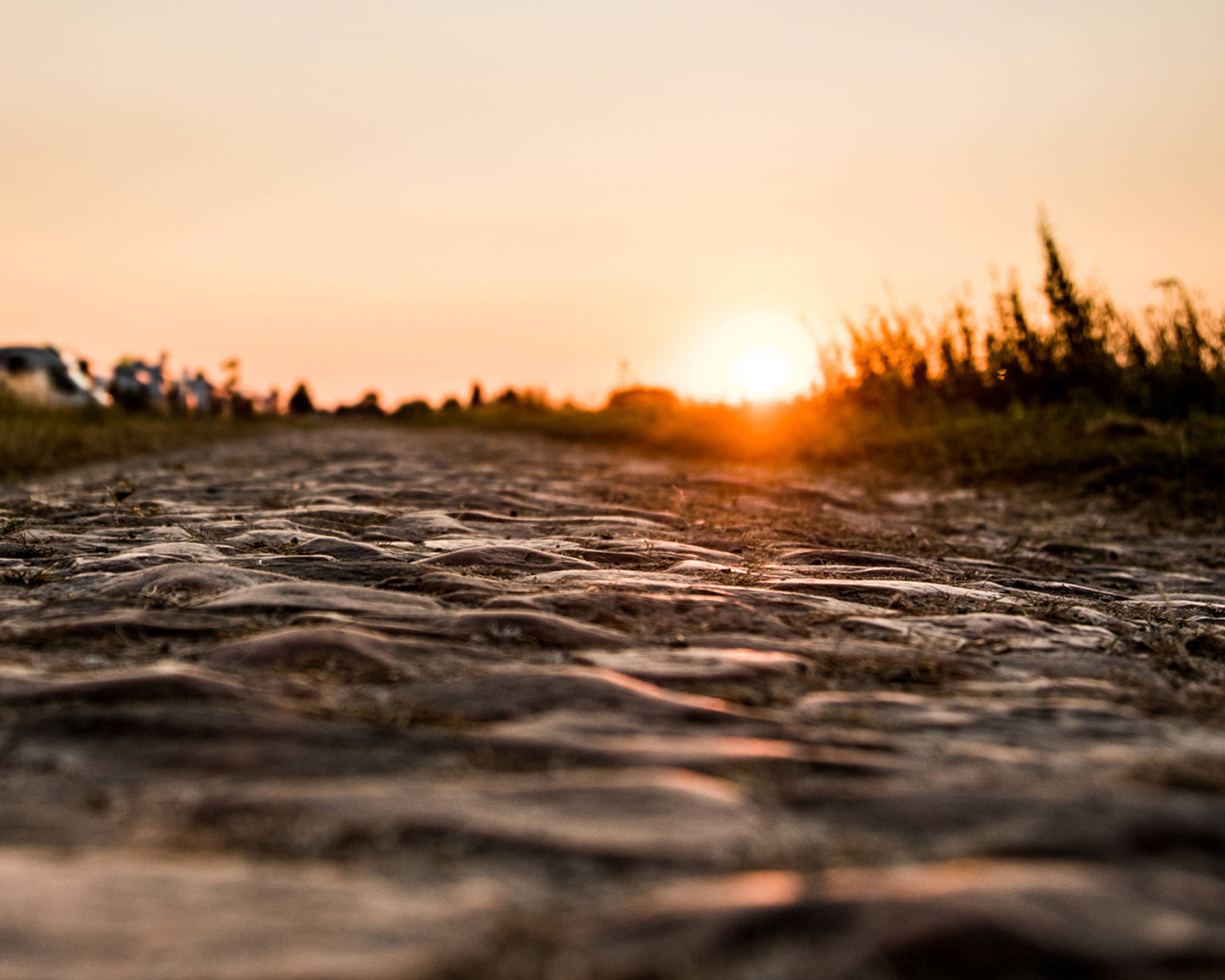From the way that he raced, you wouldn’t know that Jai Hindley had come to this year’s Giro d’Italia off the back of a tough season. He was consistent and resilient in the mountains and struck decisively when it mattered most on the race’s final climb. The resistance of race leader Richard Carapaz was finally broken. Hindley had already shown his ability with a stage win; now, he has a Giro d’Italia title to his name, finishing 78 seconds ahead of Carapaz – and nobody can begrudge his success after his narrow defeat in 2020. Here’s our look at how the 26-year-old won this year’s race and the successes of its other protagonists.
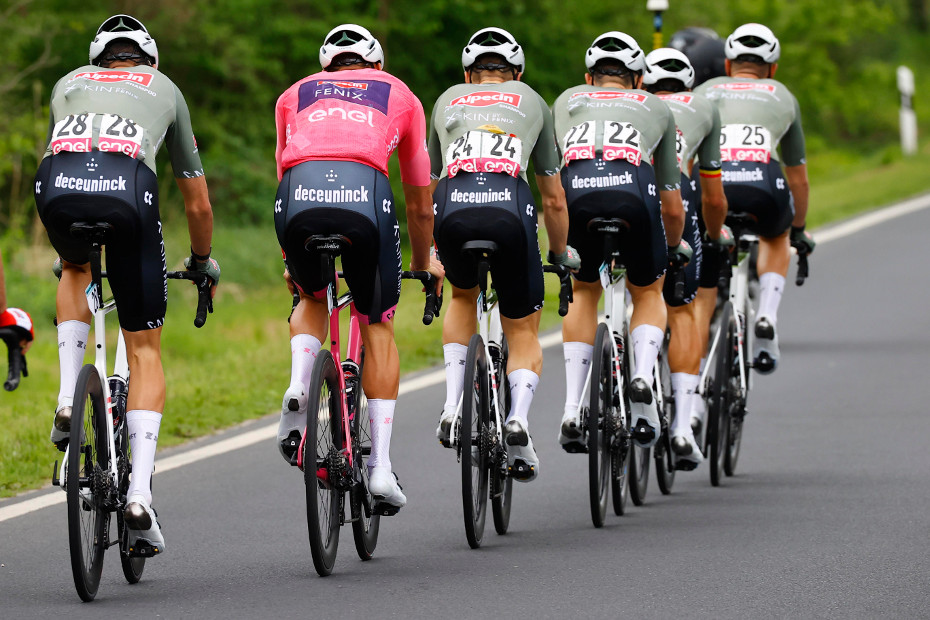
Stage 1
The grande partenza in Hungary’s charming capital city of Budapest was well worth the three-year wait. The bunch rolled out along the banks of the Danube for a 195-kilometre opener finishing uphill in Visegrád that pitted the fastest sprinters against the best puncheurs.
There’s a Hungarian saying: aki mer, az nyer – he who dares, wins. Mathieu van der Poel has never shied away from bold tactics and on his Giro debut, he showed both audacity and sparkling form. In a hectic finale, he outsprinted Eritrean sensation Biniam Girmay on his custom-painted Canyon Aeroad, decked out with Dura-Ace 9250 groupset and C60 wheels.
The flying Dutchman pulled on the maglia rosa and would spend three days in it. Van der Poel went on to be one of the race’s entertainers, challenging for several breakaway wins, popping wheelies and even making a popular cycling meme for his request of pineapple on pizza (an act of sacrilege in Italy).
His team-mates were just as dynamic. Stefano Oldani and Dries De Bondt got up the road and won from escapes on stages 12 and 18 into Genoa and Treviso respectively, capping a fine race for Alpecin-Fenix.
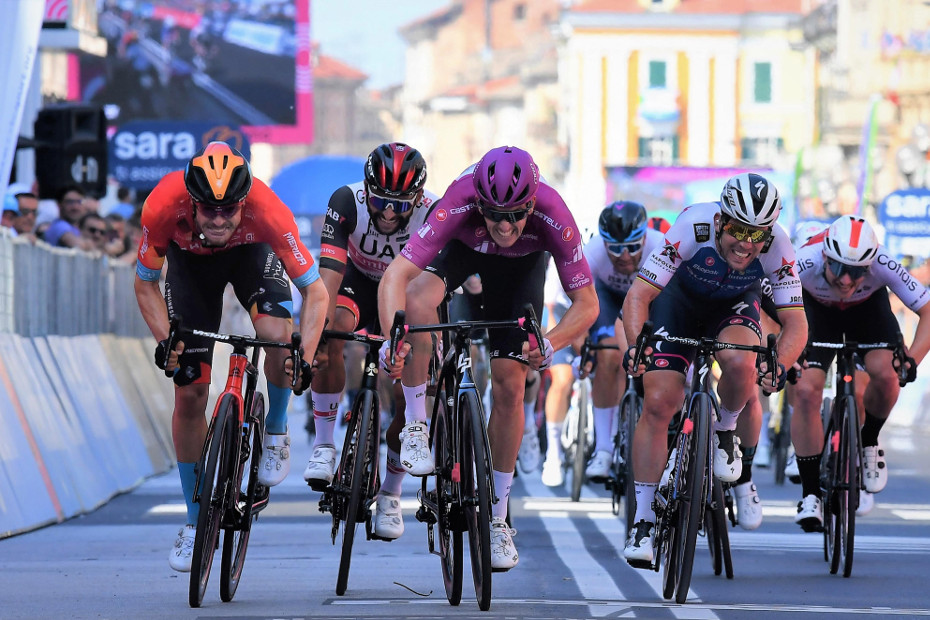
Stage 5 and 6
Once back on Italian soil, Arnaud Démare proved himself to be the bunch sprinting maestro. On stage 5, he eclipsed the rest into the Sicilian city of Messina. It was down to a combination of speed and timing from his Groupama-FDJ team, who dropped him off in prime position to put down the power. The 30-year-old stood on top of the podium 24 hours later again in Scalea. This time, he came from behind in a thrilling finale, surging past Mark Cavendish and pipping Caleb Ewan on the line with his bike throw.
Win number three came on the uphill finish into Cuneo on stage 13 – the eighth of his career at the Giro, surpassing greats Jacques Anquetil and Bernard Hinault to become the Frenchman with the most stage wins. Chapeau, Monsieur Démare.
Stage 9
The phony war was over. A day full of climbing over the Abruzzo mountains, with a finish on Blockhaus, would give a clear indication of who could win the race. The 14-kilometre leg-acher is steeped in Giro history, shaking up the GC ever since its first inclusion 55 years ago. It would also be a heartbreaker for pre-race favourite Simon Yates and Wilco Kelderman, who were dropped and saw their hopes disappear. Meanwhile, Richie Porte kept the pace high and whittled the lead group down to a dozen before his fellow Ineos Grenadier Richard Carapaz launched a searing attack. However, six riders fought out the finish and after leading out the sprint, Jai Hindley of Bora-hansgrohe raced to victory, narrowly holding off Romain Bardet.
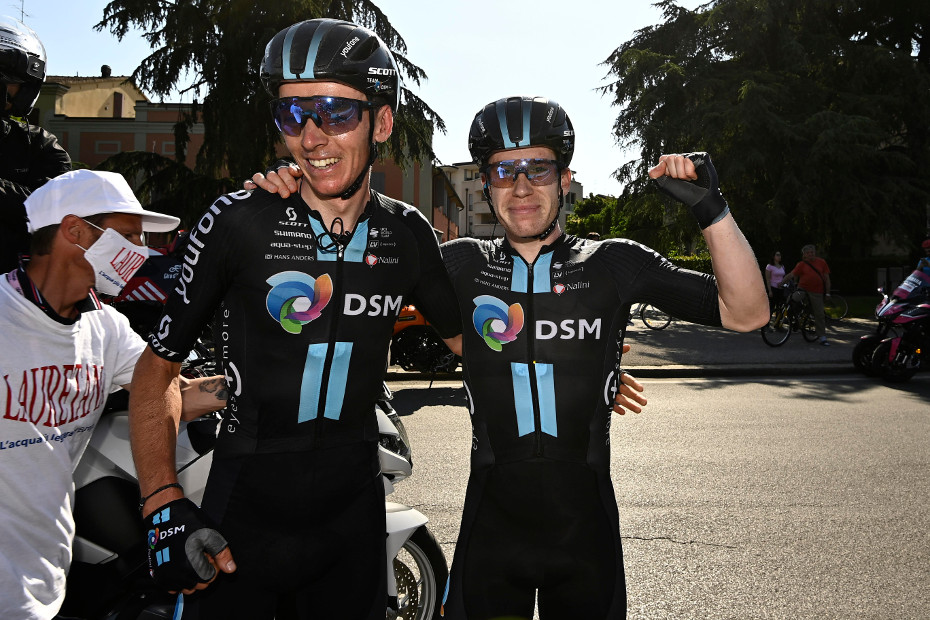
Stage 11
Given a stage profile flatter than a Neapolitan pizza base, you didn’t need to be Nostradamus to conclude that a day’s racing on the Emilia Romagna plain would culminate in bunch sprint battle royale. Team DSM’s Alberto Dainese burst out of the pack for a breakthrough first Grand Tour stage win in Reggio Emilia. Coming from some way back, he surfed the wheels and timed his charge to perfection. It was also Italy's first stage win in the 2022 edition.
He had even been helped by Romain Bardet in the lead-out. Team DSM’s leader looked to be in vintage form during the race’s first half and was sat pretty in fourth overall. However, the Frenchman was denied a chance to challenge for victory, abandoning during stage 13 with illness. Unbridled joy and cruel fate for Team DSM within 48 hours.

Stage 14
Through the race’s second week, Ineos Grenadiers were prominent yet content to wait in the wings, playing second fiddle to surprise leader Juan Pedro López of Trek-Segafredo. However, Richard Carapaz moved into the maglia rosa after a day full of swashbuckling racing. Excitement isn’t just confined to saw-blade stage profiles and lofty mountains at Grand Tours: the route did not exceed 600 metres in altitude, but the hills came thick and fast on the way to Turin. Midrace, Bora-hansgrohe hit the gas and exploded the race.
While Simon Yates stole away for a stage victory, only three contenders remained behind him: Hindley, Carapaz and Vincenzo Nibali. The Australian moved to within seven seconds of the Ineos Grenadier and the sight of the pair crossing the finish line locked together, unable to crack the other, would become very familiar.
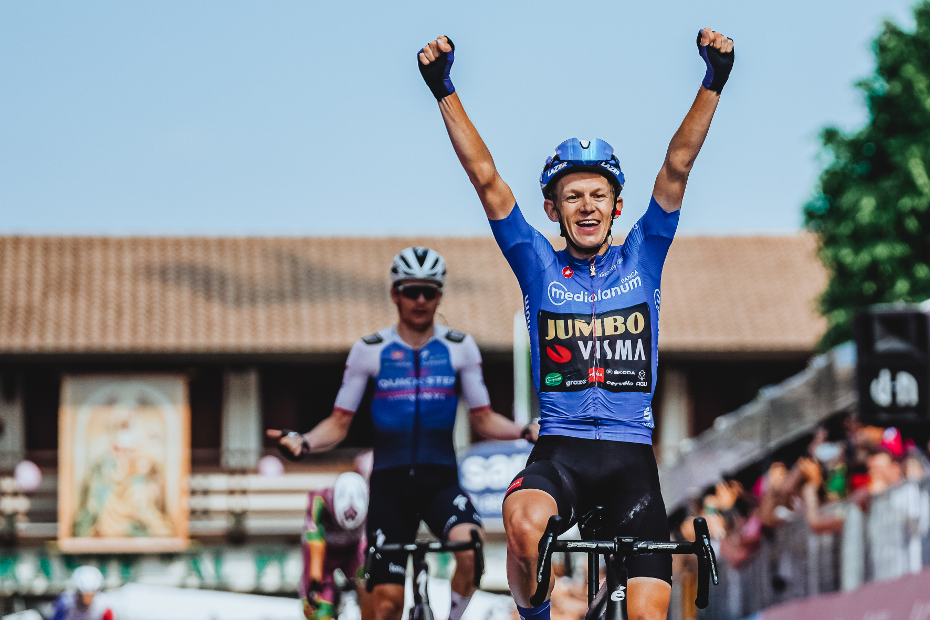
Stage 19
As the race hits its final peaks, Koen Bouwman could already reflect on a high-flying race. On stage seven, to the fore in the rolling Basilicata hills of southern Italy, he outsprinted decorated breakaway companions Bauke Mollema and Davide Formolo for a maiden Grand Tour stage win.
Throughout the race, the 28-year-old added to his Mountains classification tally until his lead became emphatic and unassailable, over 200 points ahead of his closest rival. Job done? Not quite. The cherry on the cake was a second stage win while wearing the maglia azzurra, cementing his position as Jumbo-Visma’s brightest light of the race. At the finish up high at the Santuario di Castelmonte, he bettered his four breakaway companions, even if the tight final corner meant his rivals had a few things to say about his racing line afterwards.
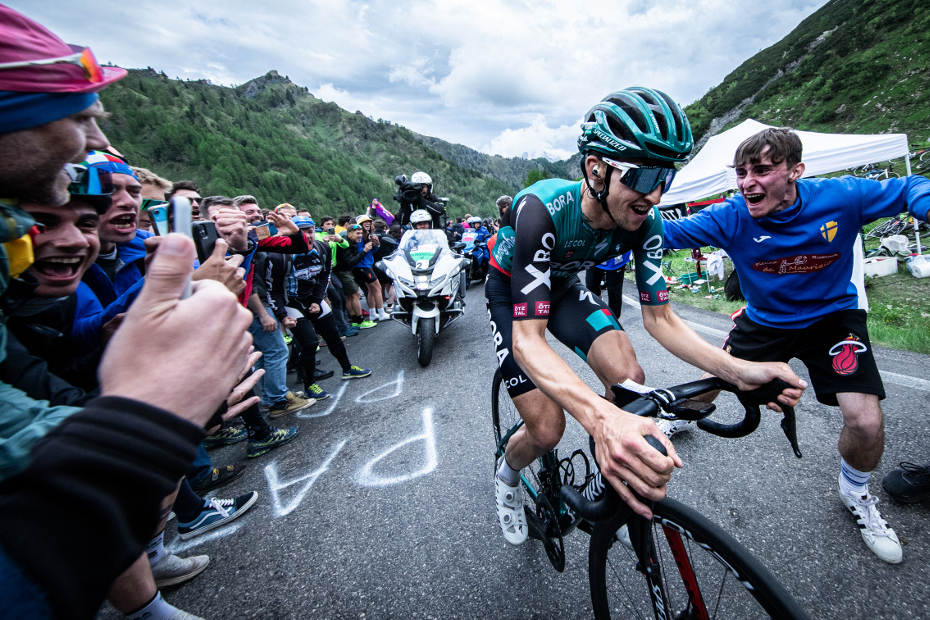
Stage 20
Then there were three. Day after day, Richard Carapaz and Jai Hindley watched and tested one another with attacks, neither willing to give an inch, while Mikel Landa often joined them as a partner in crime. Just three seconds separated Hindley from Carapaz before the race’s penultimate stage, which would finish on the steep Passo Fedaia. The Giro was up for grabs and something had to give. On the famous Dolomite climb, Hindley surged with four kilometres to go, helped by an injection of pace from team-mate Lennard Kämna. Carapaz initially followed, but he could not stay in Hindley’s wheel. He did his best to limit losses, but Hindley was turning the screw. By putting one minute and 28 seconds into his adversary, the Perth climber ensured the time-trial around Verona would be a coronation rather than a nail-biter. Carapaz came so close to repeating his 2019 Giro triumph, but would have to be content with second place this time round.
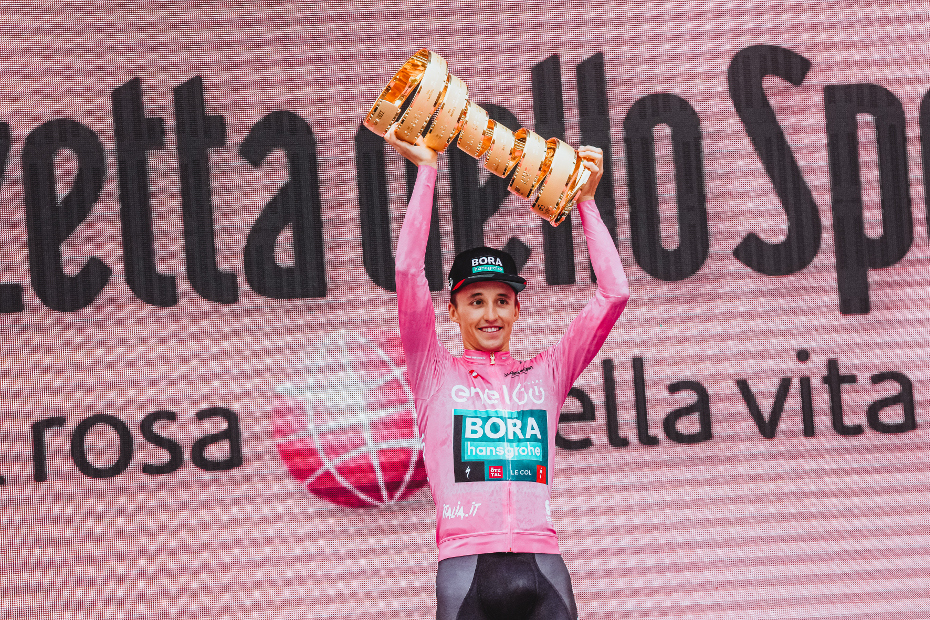
Stage 21
After another nip-and-tuck battle, Jai Hindley was no doubt happy to avoid a repeat of the 2020 Giro, which saw him finish runner-up after a final day time-trial. Despite his healthy lead, he raced the 17km course all-out, not letting up focus or power until the finish, when he punched the air and entered Verona’s thronged Roman amphitheatre like a conquering gladiator. Australia has its first Giro champion, with Carapaz finishing second and Mikel Landa third. It capped an exceptional Giro d’Italia for Bora-hansgrohe: key helper Lennard Kämna also claimed breakaway stage triumph on day four. As the sun set on a beautiful and fiercely-contested edition of the corsa rosa, Team BikeExchange-Jayco ace Matteo Sobrero was the final stage winner, tasting glory for the first time at his home race.
